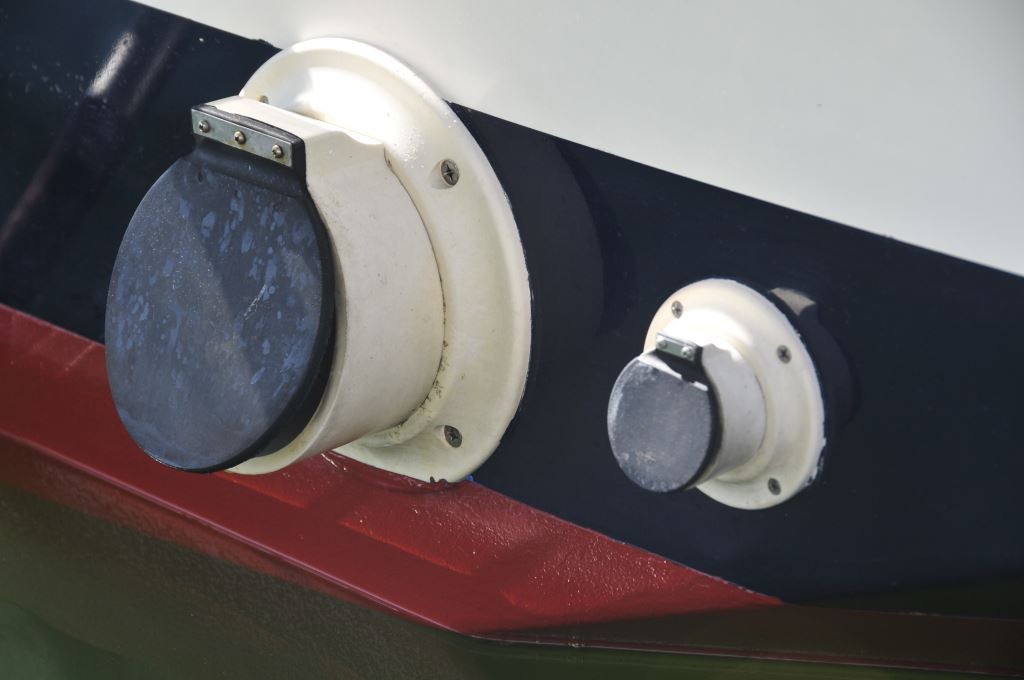From the Masthead
Building a Boat Overseas

Not surprisingly, I’m writing the final ‘From the Masthead’ column of the year while in flight, on my way from Asia back to the US; having just completed a three-week trip, in which I visited yards in China and Taiwan. During these visits I reviewed vessels in various stages of completion, from fresh out of the mold, to just months away from completion, from 55 to 96 feet, power and sail. Several will utilize lithium iron phosphate battery banks.
Having a vessel built overseas presents both challenges and opportunities. In the latter case, all of the yards I worked with on this trip are at the top of their game, having been around for decades, they are all experienced and savvy; their staffs are sharp and eager to both learn and please, and they rarely use that dreaded boat building word, “no”. In most cases, when I challenge them to meet a standard or installation request, or identify a defect, they always seem to find workable solutions. It’s a process I very much enjoy. There’s something to be said for working with a yard that has hundreds of hulls to their name, and collectively hundreds of years of experience on the shop floor.
At one yard I delivered two technical lectures, one on seacocks and raw water plumbing and another on electrical systems, to craftsmen preparing to build a vessel for my client; both the client and I wanted to be sure they fully understood the technical standards we were establishing for this project; and education seemed like the right solution. Delivering technical lectures is something I do on a regular basis, however, doing so with Chinese translation is slightly more challenging, and interesting. Much to my surprise, the language barrier did not even begin to stifle the volume, and technical depth, of the questions being asked; at one point we delved into the intricacies of anti-siphon valves for a full 15 minutes.
Having said all that, building overseas, and in Asia in particular, can present some challenges as well, with the predictable language barrier being among the most significant. For instance, the words for “brass” and “bronze”, can both translate into the same Chinese phrase, “yellow metal”, with potentially disastrous results, as one of these is suited for raw water, and the other is not. For these and other reasons, it’s important to fully understand the yard’s level of expertise for issues of this sort, of which there is a seemingly endless list. Thus, the more detailed the design, engineering, schematics and specifications, the less that is left to chance, or shop floor interpretation.
The Asian boat builders I work with on a regular basis are professionals to the core, and having been accepted into their fraternity (after nearly 100 trips to the region), I’ll reiterate that working with them is very gratifying indeed. However, and this is true of any boat builder, foreign or domestic, as a buyer you must carefully outline your expectations, while immersing yourself in as many of the details as possible, like the aforementioned issue of establishing the difference between bronze and brass, and when and where each can be used. The more hands-on you are, both before committing to the build and during construction, the greater the likelihood that you will be satisfied with the end result. I routinely tell my clients, having a boat built should be satisfying, gratifying and even fun, if it’s not then something is wrong.
Finally, if you do resolve to have a vessel built in Asia, you should visit the yard during the construction process at least once, but preferably several times, and when doing so, do not miss the opportunity to see some of the region. As often as I’ve been, I continue to find the culture, history, landscape and food of both China and Taiwan, positively enthralling. You are flying a long way to get to the yard, so put those miles to good use, take in the sights, it may be a once in a lifetime opportunity.

A view of Alishan’s “cloud sea”, from an 8,700 foot vantage point.
On this most recent trip I had three free days between projects; I utilized them by renting a car in a city on Taiwan’s central west coast called Chiayi, (I was able to take Taiwan’s excellent high speed train there from the airport in Taipei) and then driving from there for two hours east, the route includes an endless series of hairpin turns, through breathtaking scenery, ascending form sea level, and tropical conditions, to near vertical mountain terrain, through tea plantations and bamboo stands, and ultimately arriving in a mile-high alpine rain forest. This area is known as Alishan, and it’s rich in both scenery and history.
I’m an inveterate hiker and photographer; if you are in reasonably good shape the area is simply made for the two pursuits; while there I did what I might classify as some of the most memorable and arduous hiking of my life. This was my second trip to this locale, so I knew what I was getting into; on one day I managed the following statistics, while hiking along an abandoned, narrow gauge lumber railroad built around the turn of the century; 38,000 steps, the equivalent of 178 flights of stairs, 29 km, reaching a maximum altitude of 8,748 feet. This excerpt from my journal for the day affords some insight into what one encounters, “The railroad…the difficulty that must have been involved in constructing it early in the 20th century, by the Japanese must have been mind-boggling, particularly when one considers the equipment they used: hand saws, steam powered winches and likely lots of dynamite. The forest is mostly red cedar; some of the trees are truly massive, and well over 1,000 years old. While these are awe-inspiring, a darker aspect permeates these forested slopes. In this otherwise enchanting place, I counted scores of gargantuan stumps, one of which I measured was 15 feet across at its base, it is heartbreaking to think of these giants being felled to make furniture, and build temples, much of which probably went up in smoke during WWII.
Along the route I count 13 trestles and 13 tunnels, and two covered stretches of track, part trestle and part tunnel, but open on one side, like something you’d see in the Dolomites or Swiss Alps, one of which has been severed by a massive landslide. Traversing the gap requires one to hold onto chains and utilize re-bar foot holds, while avoiding looking down. One of the longer tunnels also has a major cave in; it is no longer passable by train, although hikers have cut a path over the huge rock and dirt mound, up into the cavity of the tunnel ceiling, and down the other side. This tunnel and some of the others are so long and dark, walking them without a flashlight would be difficult”. I will post photos form this Taiwanese alpine foray on the SDMC photo gallery page in the near future.
I wish all readers a Merry Christmas and a happy, healthy and prosperous New Year.
This month’s Marine Systems Excellence eMagazine covers the subject of siphoning vs. flooding, I hope you find it both useful and interesting.
Flooding vs. Siphoning
Know the difference and avoid both
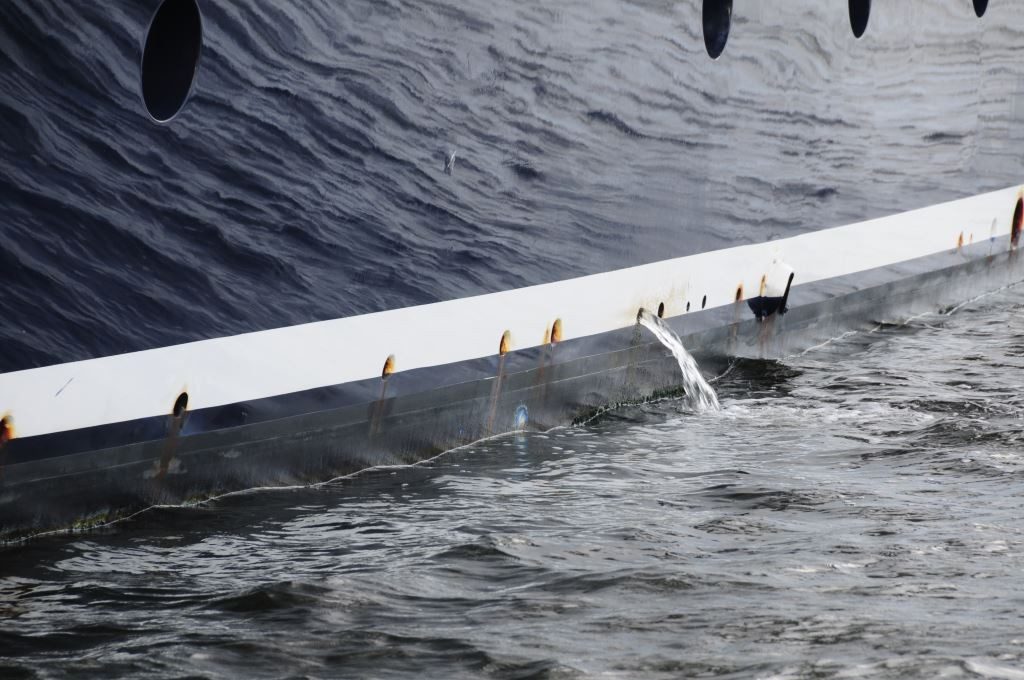
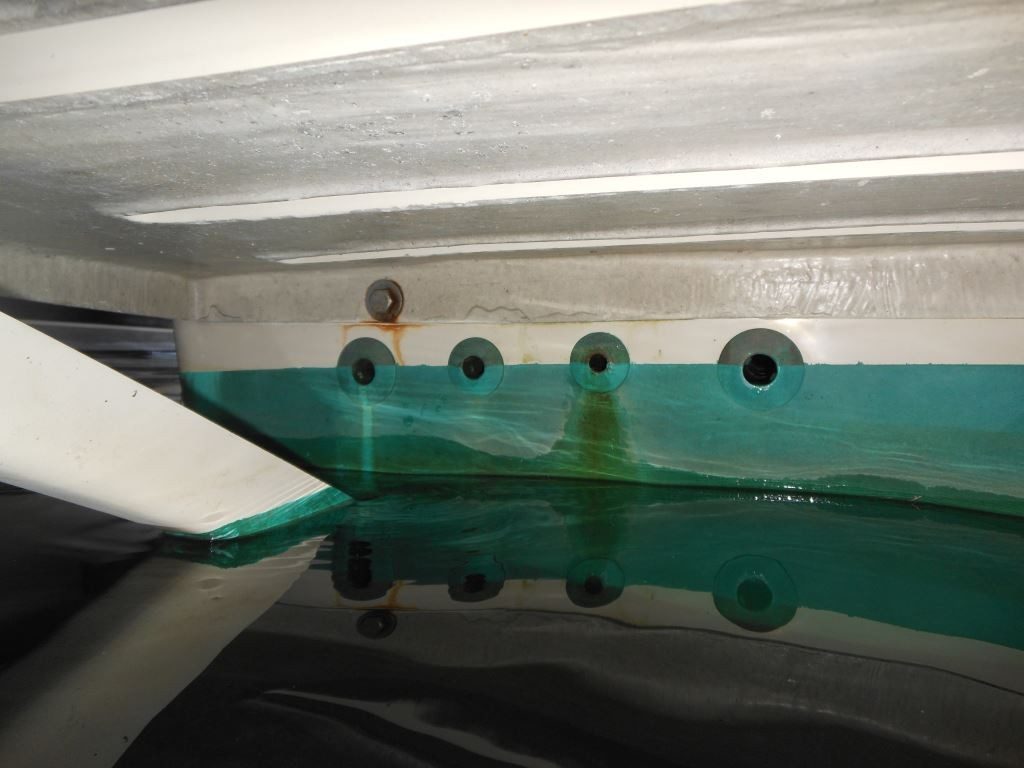
Engine, pump and other discharges that serve equipment that is open to the hull interior, which are close to the waterline, and which will be submerged if the vessel heels or squats, must utilize both an inverted U riser, as well as an anti-siphon valve. The first prevents pressurized flooding, while the second thwarts flooding that is the result of a siphon.
When I work with boat builders to evaluate their designs and systems installations for my clients, I am often reminded of how easy it is to confuse flooding and siphoning, along with the different techniques used to prevent each phenomenon.
In one case I dealt with several years ago, during my tenure as a yard manager, nearly every time the vessel in question got underway, the genset’s cylinders would flood with water, regardless of whether it was used or not. I contacted the vessel manufacturer for guidance, as the repairs were covered under warranty, and was told that a fix was on the way, I’d be receiving a part shortly. I’d already formulated a theory regarding the cause of the problem, and a solution, and was anxious to see what had been sent. When I opened the box I was disappointed to find a common anti-siphon valve, the sort used on an engine raw water supply, bilge pump or head. The instructions specified that it was to be installed in the raw water supply between the genset’s water pump and exhaust elbow. While the specified location was correct, I was never the less puzzled because the genset already had an anti-siphon valve, albeit different than the replacement I held in my hand, in this location; and it was properly installed two feet above the dynamic waterline. Again, that was all correct.
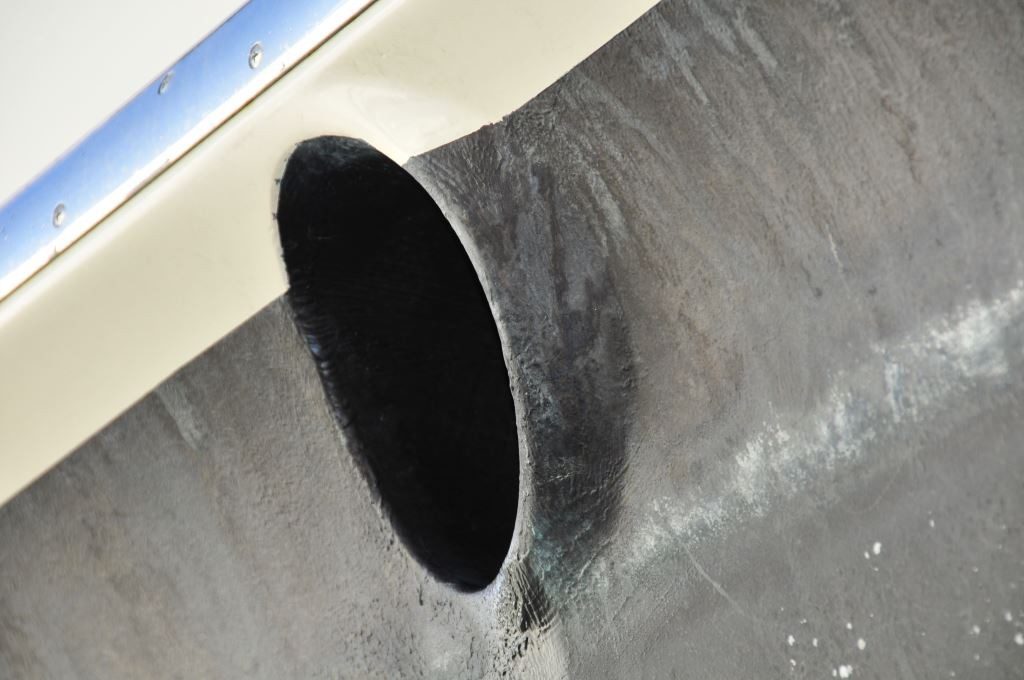 \
\ 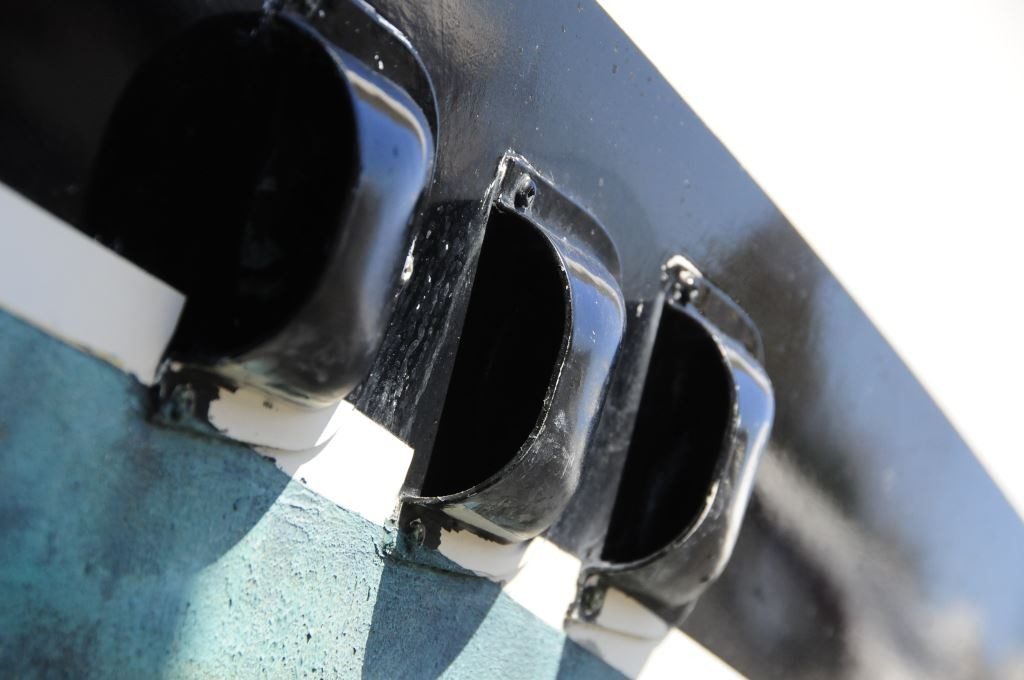
Deflectors located directly ahead of hull-side exhaust outlets (top) are among the most effective means of preventing bow wave-induced flooding. Clamshells (above), on the other hand, can be used to prevent ordinary wave action from forcing water into through hulls for engines, gensets and bilge pumps. These can, however, restrict flow, and when used they should face aft, like the ones shown here, or be angled down and aft at 45°. Under no circumstances should they ever face directly down, as that creates a funneling effect for beam to waves.
The reason I was certain this would not fix the problem is straightforward enough, in order for water to flood the exhaust, via a siphon effect, the genset would have had to run, thereby beginning the flow of water that’s necessary for a siphon to be established. In spite of my objections, the manufacturer (one of the country’s largest production builders) insisted I install the anti-siphon valve. I did so, and then sea trialed the vessel, however, before getting underway I disconnected the exhaust hose from the genset’s exhaust elbow. I positioned it adjacent to the genset at the same height as the elbow, and instructed the helmsman to get underway, telling him to be sure to progress slowly through the acceleration process until he reached wide open throttle. It didn’t take long for the problem to manifest itself; a few minutes after getting underway water began to gush from the hose, occurring at the transition point between displacement and planing speed, just as the vessel was beginning to get over what’s known as the “hump”. Obviously the generator hadn’t been operated with the exhaust system disabled, as it was for this test; however, I was confident a siphon wasn’t at work here and needed to prove my theory. In other exhaust system analyses, I have conducted tests with a length of clear hose in place of the standard black exhaust hose. However, if my hunch was right for this case, doing so would have allowed water to enter the generator’s exhaust manifold and cylinders once again, something I wished to avoid, therefore making this unnecessary.
The culprit in this case was water pressure rather than a siphon…the genset exhaust discharge was located approximately six inches above the resting waterline, on the hull, close to the stern. While underway, however, the stern squatted, as many vessel’s sterns do, submerging the exhaust below the trailing bow wave. In spite of a relatively substantial inverted U riser in the hose between the overboard discharge and the generator’s lift muffler, water was pushed into the hose, filling the muffler and eventually backing up into the engine. This was a pure water pressure flooding problem, siphoning played no role whatsoever, and as such no anti-siphon valve could have prevented it from occurring. When I reported this to the manufacturer, the initial next directive involved the installation of an anti-siphon valve…at the apex of the inverted U riser. It required a conference call with a production manager and engineer, to explain to them that the installation of an anti-siphon valve in this location would also have no effect on the flooding, as the conditions for a siphon did not exist.
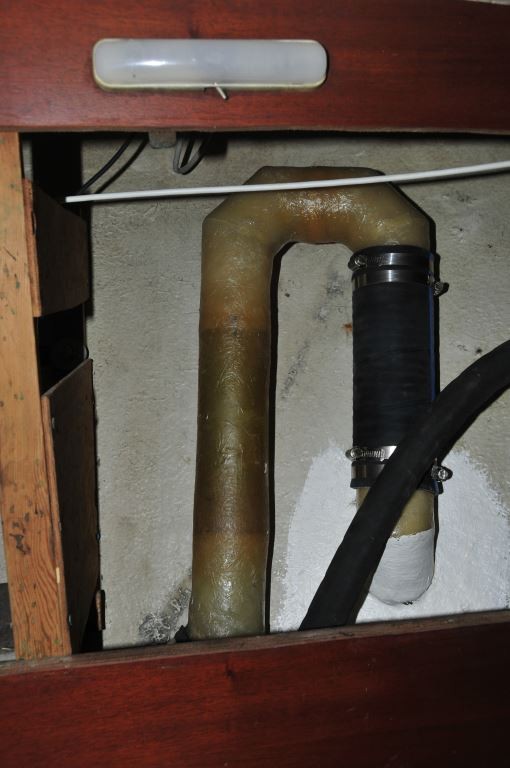
Wet exhaust system inverted Us are effective in preventing water from backing up into engines and gensets. However, if enough pressure is present, even a riser’s height can be overcome. This is especially problematic on engines that may not be running while a vessel is underway, such as gensets and sailing vessel propulsion engines.
The solution was an interesting one, and the very essence of simplicity; a small semicircular wedge of prefabricated fiberglass was attached to the hull immediately forward of the exhaust discharge a spoiler of sorts, which effectively deflected the slip stream of water away from the hull before it could enter the exhaust outlet and hose. Several sea trials under varying conditions proved the design sound, under no condition could water be made to enter the exhaust system.
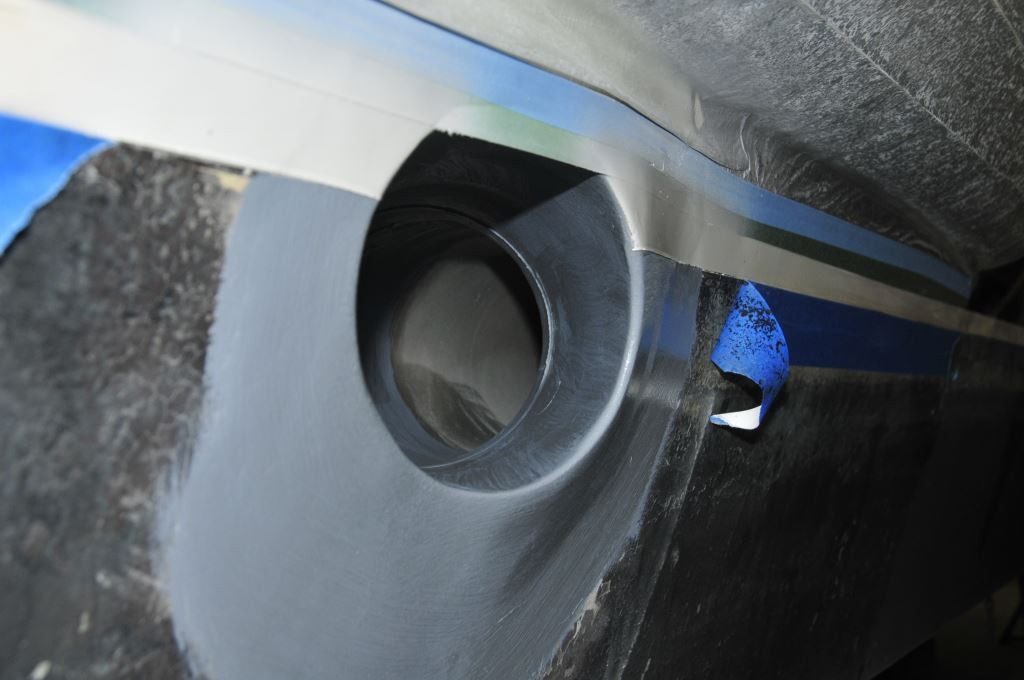
A deflector was added to this exhaust, to prevent pressurized water entry, created by the vessel’s bow wave at the point of transition from displacement to planing speed.
While a rubber flap is sometimes used to prevent back-flow, they are more effective for transom rather than side exhausts, in the latter application they are frequently dislodged and lost. Yet another alternative involves the use of a proprietary exhaust check valve, available from marine exhaust manufacturers. While these are viable and effective at preventing water from being driven up and into exhaust systems, they are difficult to inspect once installed, users have no way of readily knowing if the check flap remains intact, or is even there at all. Instead, my goal was to prevent water from entering any part of the exhaust system beginning at the hull outlet. Because water only entered under a narrow set of conditions, upsetting that scenario was all that was needed.
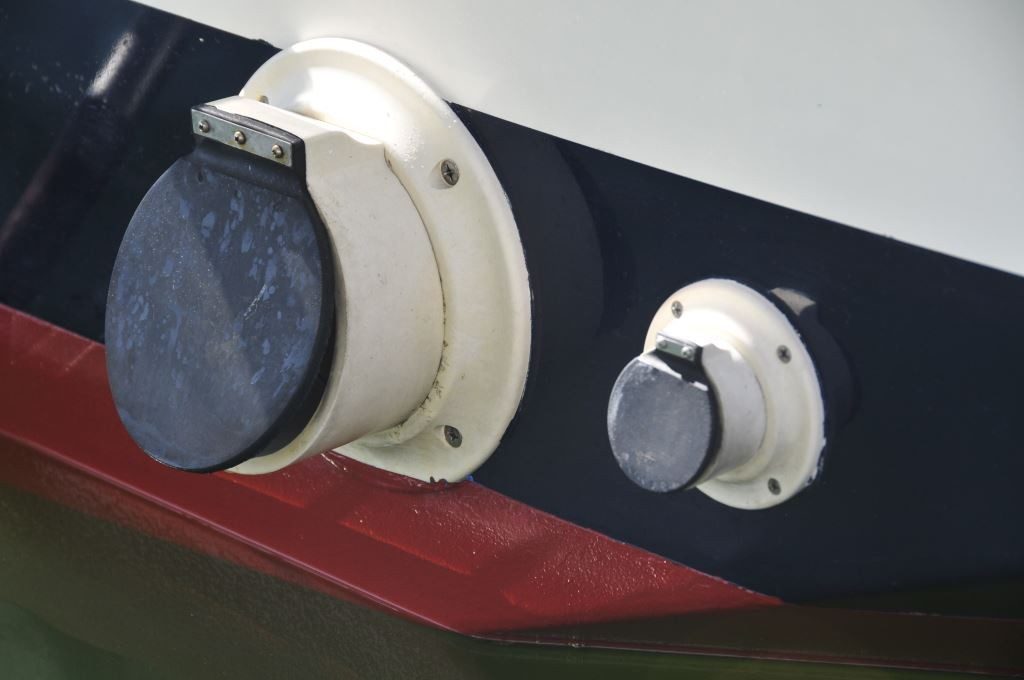
Flappers can be an effective means of preventing water from traveling the wrong direction into a transom-mounted exhaust discharge outlet. They do, however, wear out and often fall off without the owner’s knowledge. If your vessel is equipped with these, be sure to check them regularly.
Unlike pressure-flooding, siphons are created when a flow of water is established, typically as a result of pumping. When the flow stops and water runs down the longer side of the hose, and suction is created, a siphon can be established. If the discharge is lower than the inlet, (almost) regardless of the elevation of the hose in between, water will continue to flow. The most common areas for siphons to occur are bilge pumps and engine raw water cooling systems. Contrary to popular belief, siphons are almost never created inside an exhaust discharge itself, the hose is too large and the stream of water, being mixed with gas, is too diffuse. In the case of an engine raw water cooling system, a siphon is often prevented by the raw water impeller blades, until one or more of the blades if broken off. Once that happens, and in a case of impeller roulette, when it stops in such a way as to bridge the inlet and outlet of the pump, a siphon can occur where it hasn’t been able to occur previously. This sort of failure often catches owners unawares, in that the circumstances can take years and thousands of hours of running time to manifest themselves. It’s also worth noting, a siphon that occurs on an engine/genset can lead to whole-vessel flooding and sinking. As unlikely as it may seem, I’ve encountered this scenario on a few occasions, on vessels with engines mounted below the waterline; wherein water siphons into an exhaust system, fills it up and then migrates into the cylinders, then through open intake valves, through the intake manifold and into the boat.
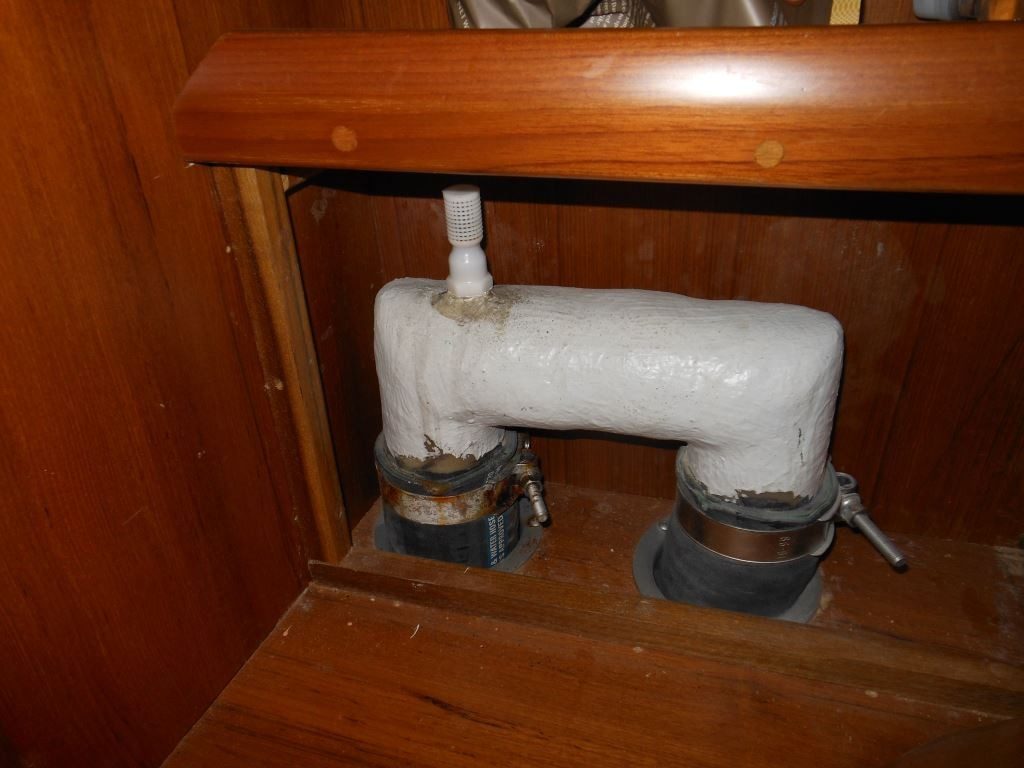
Because it is filled with a mixture of gas and liquid, the likelihood of a siphon being established within a wet exhaust is very low. While there’s no harm installing an anti-siphon valve in such an exhaust system, like the one shown here, it’s unnecessary. More importantly, it will not prevent pressurized flooding.
Make sure these systems are equipped with anti-siphon valves, located on or as close as possible to the centerline of the vessel, so they remain at least 18” (check with the manufacturer of the anti-siphon valve, their requirements may differ) above the heeled waterline at all times, especially for sailing vessels, and make sure you inspect and service them, i.e. disassemble, clean and replace the valve if necessary, at least annually.
I frequently tell vessel owners/do it yourselfers, and boat builders alike, ‘when in doubt, if you believe there is the slightest possibility of a siphon occurring, even under unusual circumstances, install an anti-siphon valve, and keep in mind the possibility of a grounding, or a vessel being “pinched” under a dock, and the heel it induces’. And, make certain you understand the difference between siphon and pressure flooding, and how to prevent each in its own right.

